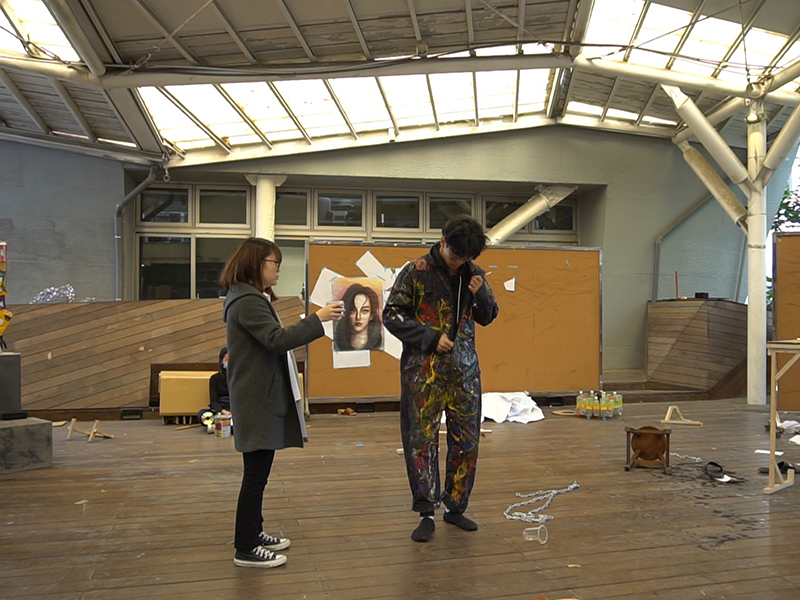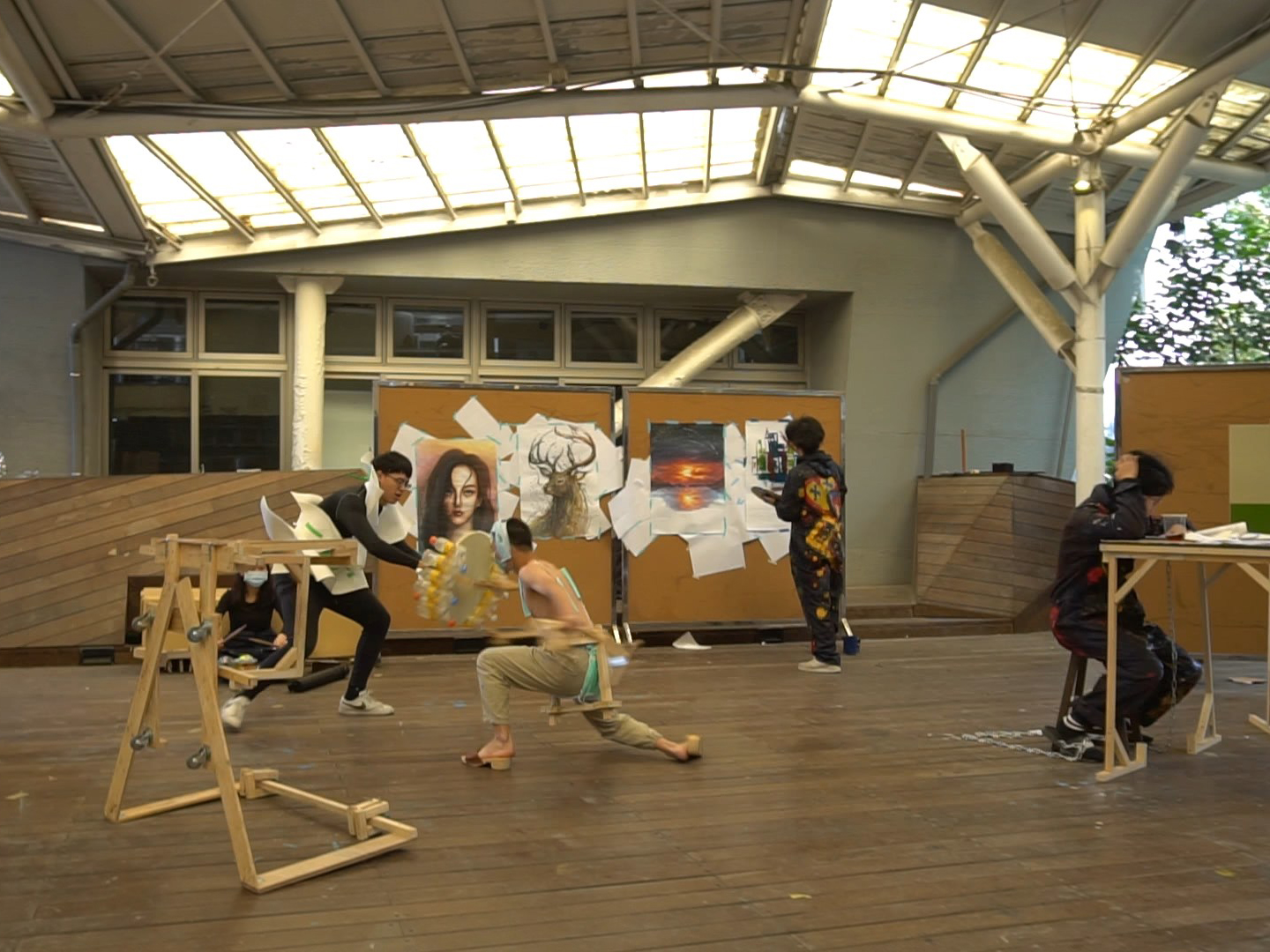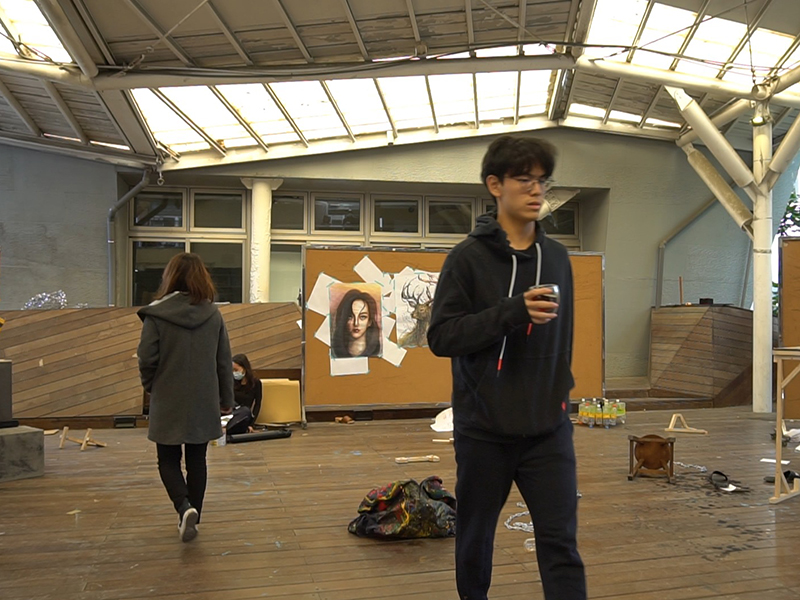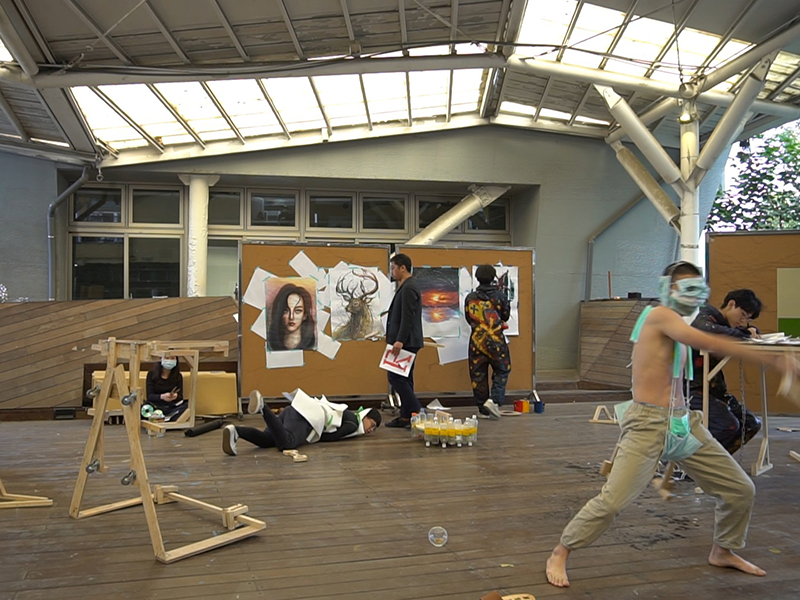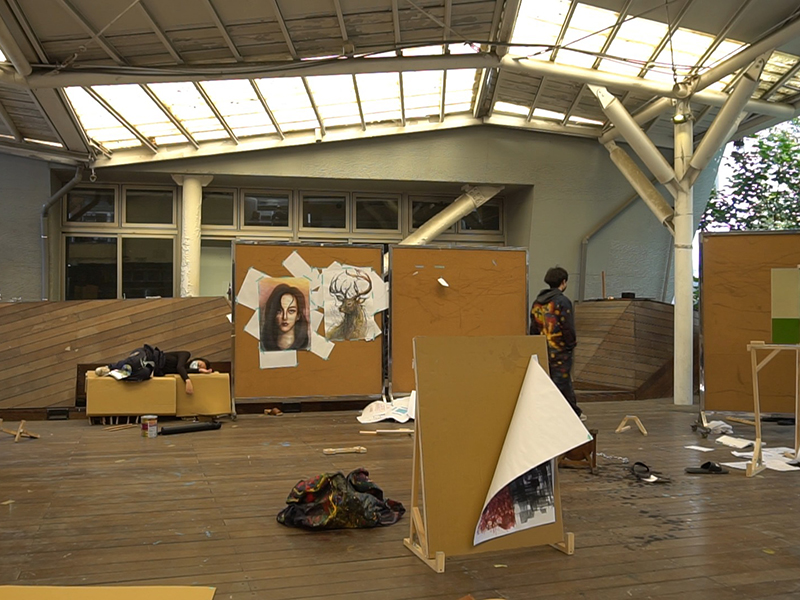指導老師:張庭嘉
Advisor: Ting-jia Zhang
成員:邱日新、王子銘、李芷蕎、陳柏如、林宇軒、沈靖
Members: Jih-hsin Chiu, Zi-ming wang, Chih-chiao Li, Bo-lu Chen, Yu-hsuan Lin, Ching Shen
從實體構築移轉到任意構築
From Construction to Any-construction-whatever
建築起始於人類文明的基本需求—「建造」。我們建造原始小屋,以抵禦風的吹襲、外人的入侵、地震的晃動、太陽的日曬、強雨的沖刷。約定俗成的建築教育觀點,訓練建築工作者,設計實體構造傳達使用者如何體驗、感受、經驗空間。從原始小屋到神性空間、從機能主義到後現代主義、從傳統建築到工藝轉型…,「構築」精神貫穿了上述總總建築行為,建築產業工作者,具有敏銳的實體構築能力、亦有營造空間氛圍的能力。任意案件研究室 TEAM 1,強調將構築行為移轉到任意媒材,解放創作中的身體性、解放創作中的思考向度。在 TEAM 1 的設計課程中,我們邀請到焦家鴻老師帶領學生啟蒙肢體,將人體視為動態的實體、生物機械一般地表現自身的肢體美學。我們也要求成員必須採用任意的原創聲響,如自身的低吼、喊叫、打擊現成物以產生聲音…。「構築」行為的練習,從場景的延伸至連續分鏡的,從靜態實體的到動態實體的,從聆聽聲響到製造聲響,回應到「構築」學習本身,應有的通用性、韌性。
Architecture originated from the fundamental human need for "construction." We construct primitive huts to withstand the wind, ward off intruders, withstand earthquakes, endure the scorching sun, and withstand heavy rain. The conventional viewpoint of architectural education trains architects to design physical structures that convey how users experience, perceive, and interact with space. From primitive huts to sacred spaces, from functionalism to postmodernism, from traditional architecture to the transformation of craftsmanship, the spirit of "construction" stands a vital value in the architectural and cultural evolution process.
Professionals in the architecture industry possess the ability to construct physical structures with precision and also create the ambiance of a space. TEAM 1 members from LAB APW, emphasizes transferring the act of construction to “any-instant-media”, liberating the physicality in creation and expanding the dimensions of thought in the creative process. In the design curriculum of TEAM 1, we have invited Professor Justin Chiao to lead students in exploring the corporeality of the human body, treating it as a dynamic entity and expressing its own aesthetic through a biological and mechanical approach. We also require members to incorporate original sounds such as their own low growls, shouts, and the manipulation of existing objects from daily life to generate sounds. The practice of "construction" extends from the scenario to consecutive frames of events, from static entities to dynamic entities, from listening to sounds to creating sounds. This response to the learning of "construction" itself should possess universality and resilience.
Advisor: Ting-jia Zhang
成員:邱日新、王子銘、李芷蕎、陳柏如、林宇軒、沈靖
Members: Jih-hsin Chiu, Zi-ming wang, Chih-chiao Li, Bo-lu Chen, Yu-hsuan Lin, Ching Shen
從實體構築移轉到任意構築
From Construction to Any-construction-whatever
建築起始於人類文明的基本需求—「建造」。我們建造原始小屋,以抵禦風的吹襲、外人的入侵、地震的晃動、太陽的日曬、強雨的沖刷。約定俗成的建築教育觀點,訓練建築工作者,設計實體構造傳達使用者如何體驗、感受、經驗空間。從原始小屋到神性空間、從機能主義到後現代主義、從傳統建築到工藝轉型…,「構築」精神貫穿了上述總總建築行為,建築產業工作者,具有敏銳的實體構築能力、亦有營造空間氛圍的能力。任意案件研究室 TEAM 1,強調將構築行為移轉到任意媒材,解放創作中的身體性、解放創作中的思考向度。在 TEAM 1 的設計課程中,我們邀請到焦家鴻老師帶領學生啟蒙肢體,將人體視為動態的實體、生物機械一般地表現自身的肢體美學。我們也要求成員必須採用任意的原創聲響,如自身的低吼、喊叫、打擊現成物以產生聲音…。「構築」行為的練習,從場景的延伸至連續分鏡的,從靜態實體的到動態實體的,從聆聽聲響到製造聲響,回應到「構築」學習本身,應有的通用性、韌性。
Architecture originated from the fundamental human need for "construction." We construct primitive huts to withstand the wind, ward off intruders, withstand earthquakes, endure the scorching sun, and withstand heavy rain. The conventional viewpoint of architectural education trains architects to design physical structures that convey how users experience, perceive, and interact with space. From primitive huts to sacred spaces, from functionalism to postmodernism, from traditional architecture to the transformation of craftsmanship, the spirit of "construction" stands a vital value in the architectural and cultural evolution process.
Professionals in the architecture industry possess the ability to construct physical structures with precision and also create the ambiance of a space. TEAM 1 members from LAB APW, emphasizes transferring the act of construction to “any-instant-media”, liberating the physicality in creation and expanding the dimensions of thought in the creative process. In the design curriculum of TEAM 1, we have invited Professor Justin Chiao to lead students in exploring the corporeality of the human body, treating it as a dynamic entity and expressing its own aesthetic through a biological and mechanical approach. We also require members to incorporate original sounds such as their own low growls, shouts, and the manipulation of existing objects from daily life to generate sounds. The practice of "construction" extends from the scenario to consecutive frames of events, from static entities to dynamic entities, from listening to sounds to creating sounds. This response to the learning of "construction" itself should possess universality and resilience.
